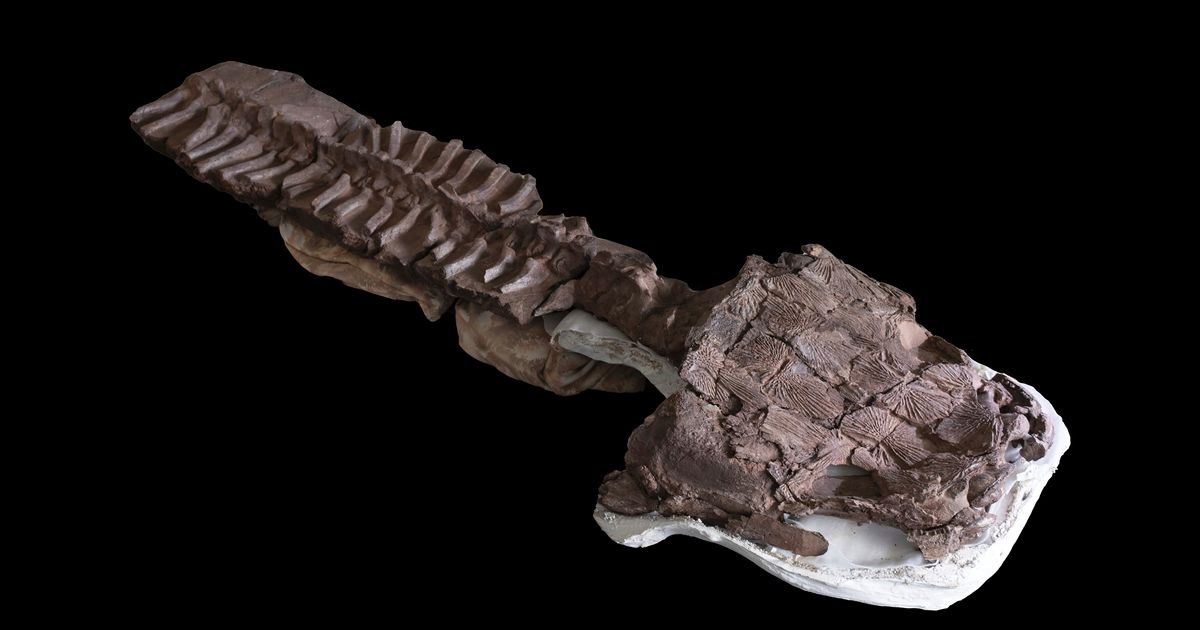WASHINGTON (AP) — Scientists have discovered fossils of a giant salamander-like beast with sharp canines that ruled the waters before the first dinosaurs arrived.
The predator, which was larger than a human, likely used its broad, flat head and front teeth to suck in and grind up unsuspecting prey, researchers said. Its skull was about 2 feet (60 centimeters) long.
“It acts like an aggressive stapler,” said Michael Coates, a biologist at the University of Chicago who was not involved in the study.
Fossil remains of four creatures collected about a decade ago were analyzed, including a partial skull and spine. The findings on Gaiasia jennyae were published Wednesday in the journal Nature. The creature existed about 40 million years before dinosaurs evolved.
Scientists have long studied such ancient predators to trace the origins of tetrapods: four-legged animals that climbed onto land using their fingers instead of their flippers and evolved into amphibians, birds and mammals, including humans.
Most early tetrapod fossils come from hot, prehistoric coal swamps along the equator in what is now North America and Europe. But these last remains, dating to about 280 million years ago, were found in present-day Namibia, an area of Africa once covered in glaciers and ice.
This means that tetrapods may have been living in colder climates earlier than scientists expected, raising more questions about how and when they took over the Earth.
“The early story of the first tetrapods is much more complex than we thought,” said co-author Claudia Marsicano of the University of Buenos Aires, who was part of the study.
The creature’s name comes from the Gai-As rock formation in Namibia, where the fossils were found, and it also refers to the late paleontologist Jennifer Clack, who studied the evolution of quadrupeds.
___
The Associated Press Health and Science Department receives support from the Howard Hughes Medical Institute’s Science and Educational Media Group. The AP is solely responsible for all content.
